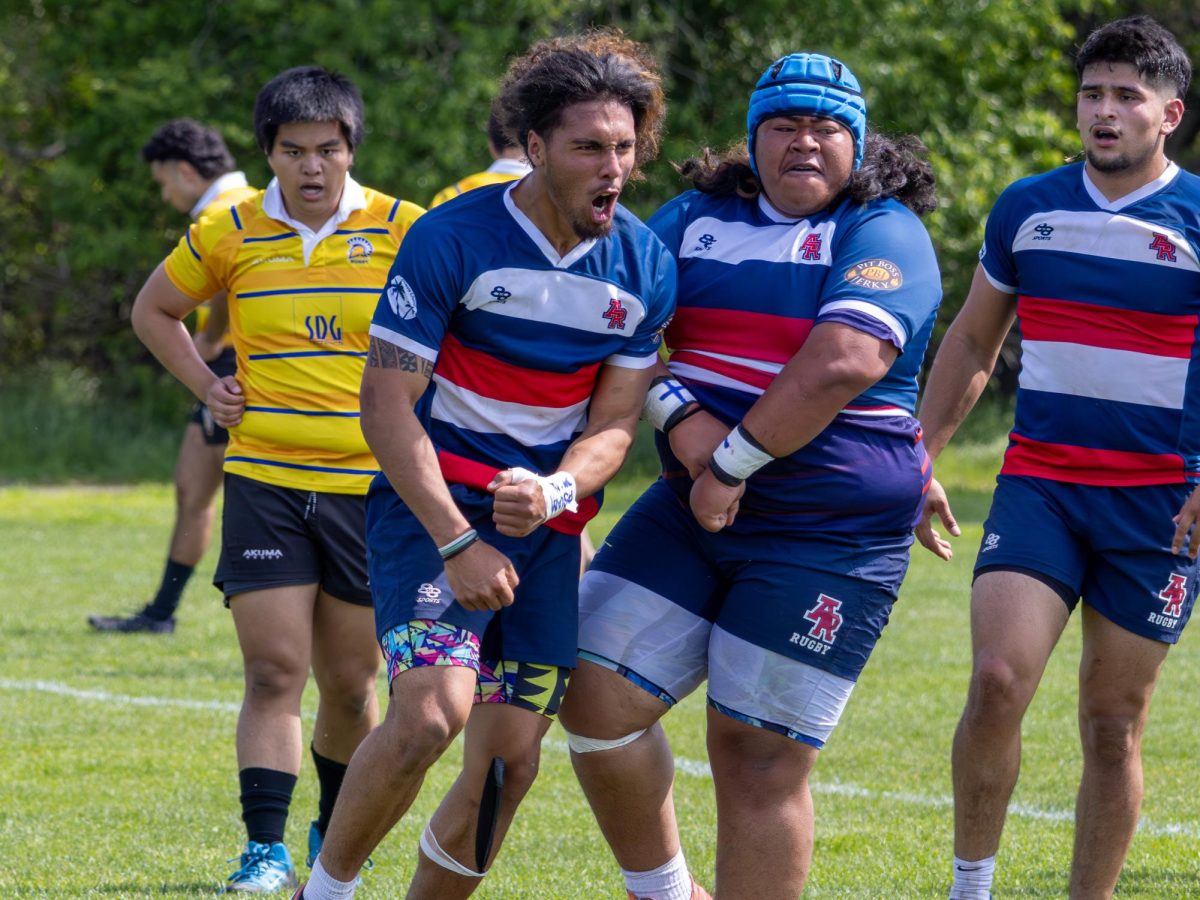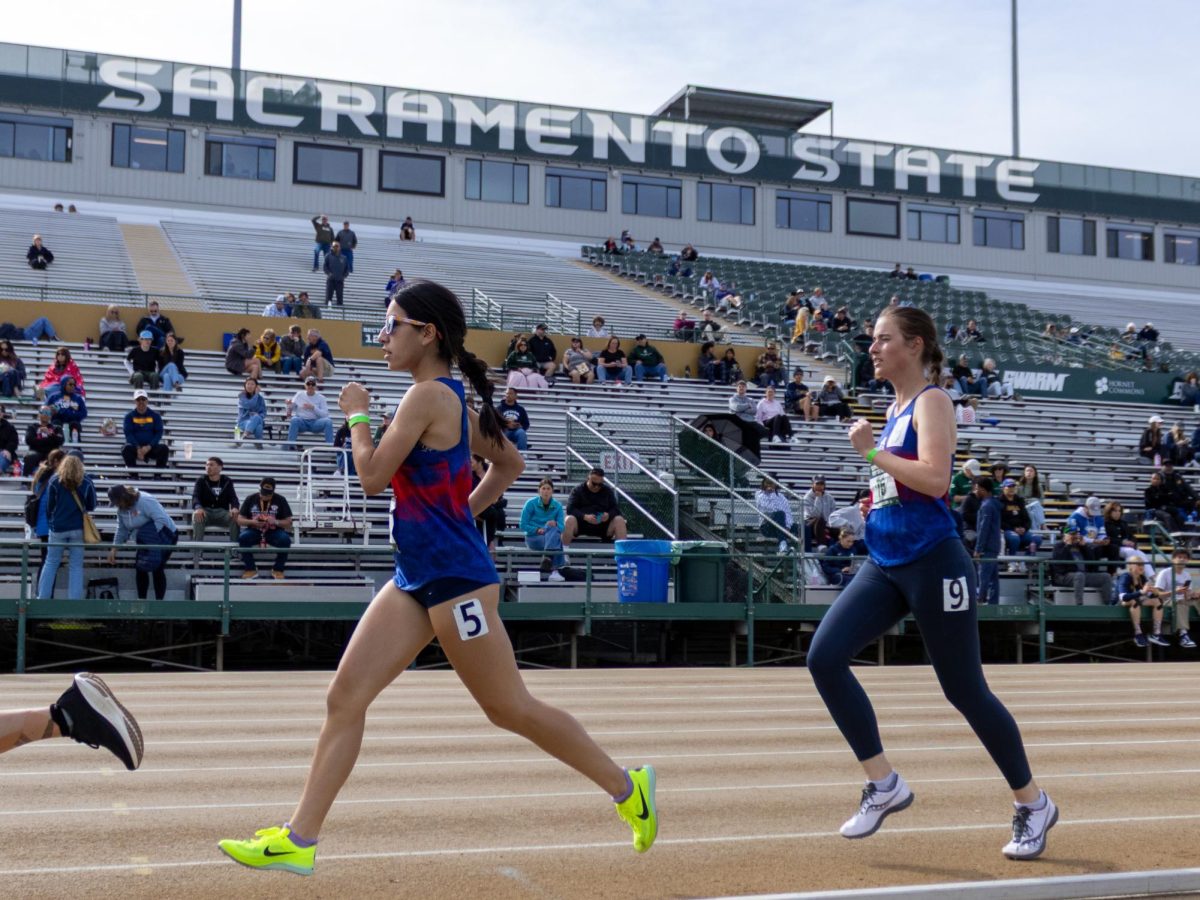“I forgot the play that I made,” Nicole Lopes said. “I didn’t know the day. I thought it was the day before. I was dizzy. I had an instant headache. When I was on the ground trying to get up, I couldn’t. My eyes wouldn’t open and I didn’t know where I was.”
Lopes, a sophomore forward on the American River College women’s soccer team, was diagnosed with a concussion after going up for a routine header when she collided heads with another player on Aug. 31 versus Butte College.
Concussions have become an epidemic that has not gone unnoticed. Although most of the stories that have come out are focused on head injuries sustained by male athletes, studies have proven that women are more vulnerable when it comes to sustaining a concussion.
According to the Sports Concussion Institute, women who play soccer have a 50 percent chance of receiving a concussion during play due to the lack of muscle in their neck and because of their smaller body frames.
A study done by the Journal of Neurosurgery Pediatrics discovered that female athletes have greater symptoms and a longer recovery time than male athletes following a concussion. The report also revealed that, in gender-comparable sports, women’s concussion rates are higher than men 1.7-to-1.
A concussion occurs when you sustain a hard hit to the head resulting in the brain being jerked around, making contact with the skull.
“Basically, a concussion happens when the brain makes contact with the skull,” said American River College Athletic Trainer Gil Bejarano.
“It’s basically like when you get a bruise on a muscle, there’s a tendency for a bleed to happen and you get bruising on the brain, which is technically a bleed on the brain and it’s just like any other bruise; it takes a while to go away.”
The sport of football has the highest concussion rate nationally for males having a 75 percent chance of receiving one, according to the Sports Concussion Institute. This year alone, the Beavers have experienced a total of four or five concussions according to Bejarano; one of them is sophomore linebacker Eric Neiderberger, who received one during the first day of fall camp doing a tackle circuit drill.
“I just shuffled across the line and the running back came through the hole and just hit me in the head with his helmet. I went back and my head bounced off the grass,” said Neiderberger. “Everything felt foggy and I felt sick to my stomach for a little bit.”
The Beavers coaching and training staff are doing everything they can to make the game as safe as possible and to make sure the players receive everything they need when faced with a concussion. The trainers went through all the precautions with Neiderberger, having him rest for two weeks before returning and giving him an ImPACT test, aerobic test and a condition test, making sure his symptoms did not return.
Concussions are close to home for football Head Coach Jerry Haflich after his head injury two years ago at the first Dusty Baker Golf Tournament when he was struck in the head with a golf ball.
“I’ve read hundreds of articles on concussions myself,” said Haflich. “I still currently have issues, so for me it is still a real day-to-day kind of thing. The severity of it is much more prevalent to me now than it was before.
“In my day, it was a right of passage to get your bell rung, and in today’s world they’re more conscious of the damage that can occur for the long term.”
ARC Athletic Director Greg Warzecka has recommended all coaches involved in any of the contact sports on campus participate in a course focused on concussions. The course educates coaches about the severity of concussions, symptoms and protocols to follow after a player shows signs of a concussion.
“I try and encourage coaches that haven’t gone through the course to participate especially in contact sports,” said Warzecka. “It’s just not a football issue. Concussions can occur in a lot of different sports.”
Coaches and players are becoming more aware of the symptoms of concussions. Regardless of all the education tools implemented for coaches, athletic trainers are now the final say when it comes to a player returning to a game.
“Sometimes, I think a player is okay and the trainers decide to hold her out,” said Paul Arrelanes, women’s soccer head coach. “There’s a huge balancing act. It’s definitely an issue that has come up over the last several years that we have to pay a lot more attention to.”
Most people believe that in order to sustain a concussion, you have to be knocked out. That statistic is true for about 10 percent of concussions. When a player is involved in a play resulting in a concussion, the most common side effect is a headache followed by nausea and dizziness.
“If you have a head to head or a headache you’re out,” said Bejarano. “It’s nonnegotiable.”
The short-term and long-term effects aren’t the only dangerous aspects of a concussion.
“If you have an athlete that has a concussion and is still suffering from the symptoms of that concussion, and they sustain a second concussion on top of that, that’s what is called second impact syndrome,” said Bejarano.
Second-Impact Syndrome (SIS) occurs when a person hasn’t fully healed from a concussion and they sustain another one. According to the National Athletic Trainers Association, the mortality rate for SIS is 50 percent and disability occurs in 100 percent of people.
Experts say one of the most important protocols implemented for student-athletes is the requirement to take an ImPACT test. Every athlete who plays in a contact sport must take this computerized neurocognitive test that measures a player’s cognitive function. Any player who sustains a concussion will not be allowed to participate in their sport until they pass the test with their baseline score.
“If they have sustained a concussion, they come back 24 hours later after they’re symptom free.” said Bejarano. “It’s a five day process no matter what. Like I’ve said, we have had athletes go months and actually had to have medical red shirts done for a concussion.”
However, there are no treatments available for a person who has sustained a concussion. Certain drugs on the market can treat some of the side effects of a concussion such as headaches and depression, but time is the only way for the brain to heal itself.
“Usually it’s just rest the brain; the brain does a tremendous amount of healing while you sleep,” said Bejarano. “The things that we stress are you don’t want to stimulate the brain at that point in time. It’s just like if you strain a hamstring, you don’t want them exercising until they’re able to.”
Concussions account for nearly 10 percent of all sports related injuries. A study conducted by Luke M. Gessel found concussions occur most frequently in soccer (21.5 percent) followed by basketball (9.5 percent). Women also sustain a higher percentage of concussions in these sports than men. The study revealed that 15.4 percent of men’s soccer injuries were concussions. In basketball, 2.8 percent of the injuries were concussions.
Lopes, who has sustained her second concussion in two seasons, has set a personal limit of three.
“Soccer is not my future, my brain is. I want to be able to use it when I need to,” said Lopes.








![“I feel like it could ultimately depend on how you use it. AI could be a great resource if you have a question or if you need a quick reminder of something or [...] if you need ideas. But if you’re using it to copy or take other people’s credit for something you didn’t do, I feel like that’s something that really discouraged a lot of people from using it.” Hope Kue | General Science (Photo by Cameron Duncan)](https://www.arcurrent.com/wp-content/uploads/2025/08/hope-1200x800.jpg)



find-way-net • Jul 4, 2016 at 4:48 pm
Among male athletes in high school and college, sports resulting in the most concussions included football, ice hockey, lacrosse, wrestling, and soccer.